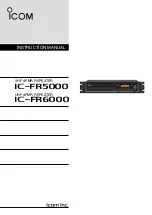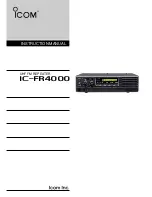
Dexon Canada Air Systems Inc
OWMDH Series Use Manual
Version 07.2019
Page
11
7. After the override has timed out remove the created heat demand. If using ice water replace the
sensor in the tubing being sure to insert it all the way to the stopper and if using the Temp.
Simulator, unplug from the jack and reconnect the temp sensor. This confirms that the Heating
Demand, “Fan Stopped”, “Low Temp.” shut down, “Manual” mode and “Reset” features and
indications are functioning as intended.
8. Replace the cable ties and duct seal on the sensor tubing and other conduits as required; check
all components and ensure they are secured. Secure the door using all the latches.
9. If desired a DC voltage representation of the discharge temperature can be monitored during
these procedures at test pin “DP” (discharge temperature test pin) as described in section 6.1
95DH Main Controller.
5.1 MAINTENANCE INSTRUCTIONS
MAINTENANCE SHOULD ONLY BE PERFORMED BY QUALIFIED PERSONNEL
ONCE A YEAR, PREFERABLY BEFORE THE COLD WEATHER SETS IN, PERFORM THE
FOLLOWING MAINTENANCE PROCEDURES.
1. Check the status board for the following indications;
a. The
“Power On” LED should be on.
b.
The fan switch should be in “Auto” mode.
c.
The “Element 1” LED may be off, steady on or blinking. An off LED would indicate there
is no heat demand; a steady on LED would indicate there is a heat demand requiring full
element capacity; a blinking LED would indicate the heat demand is being met by
intermittent pulses of energy.
2. If the
“Power On” and “Element” LEDs are the only ones on and if the fan switch is in “Auto”
mode and you’ve confirmed that it is actually running, then the unit should be functioning as
intended. You may now proceed with the following steps;
a. Power down the heating element and control circuits and lock out power as required.
b. Open the latched door to expose the controls.
c. Clear air intake louver section and discharge ducts of any debris.
d. Clear pressure relief vent/gooseneck of any debris.
5. MAINTENANCE











































